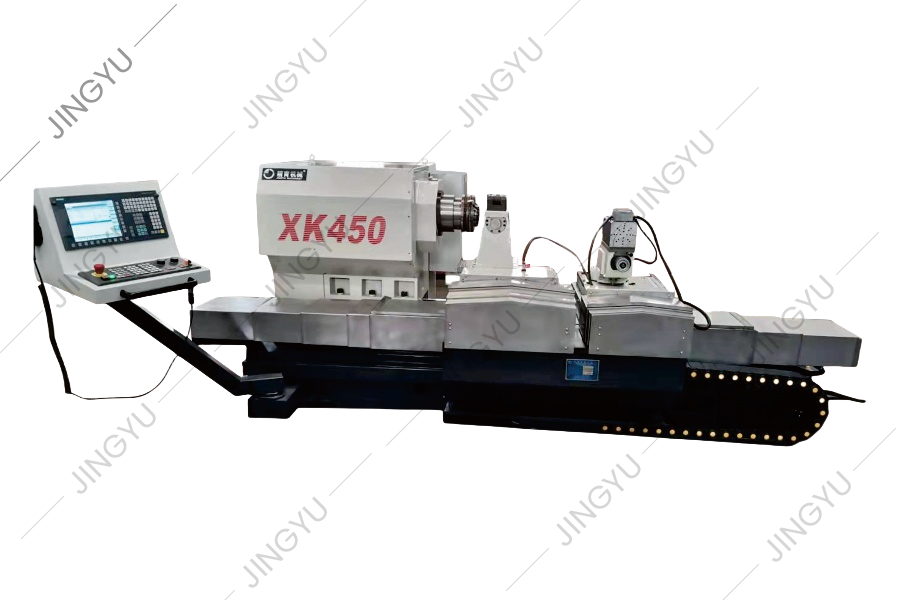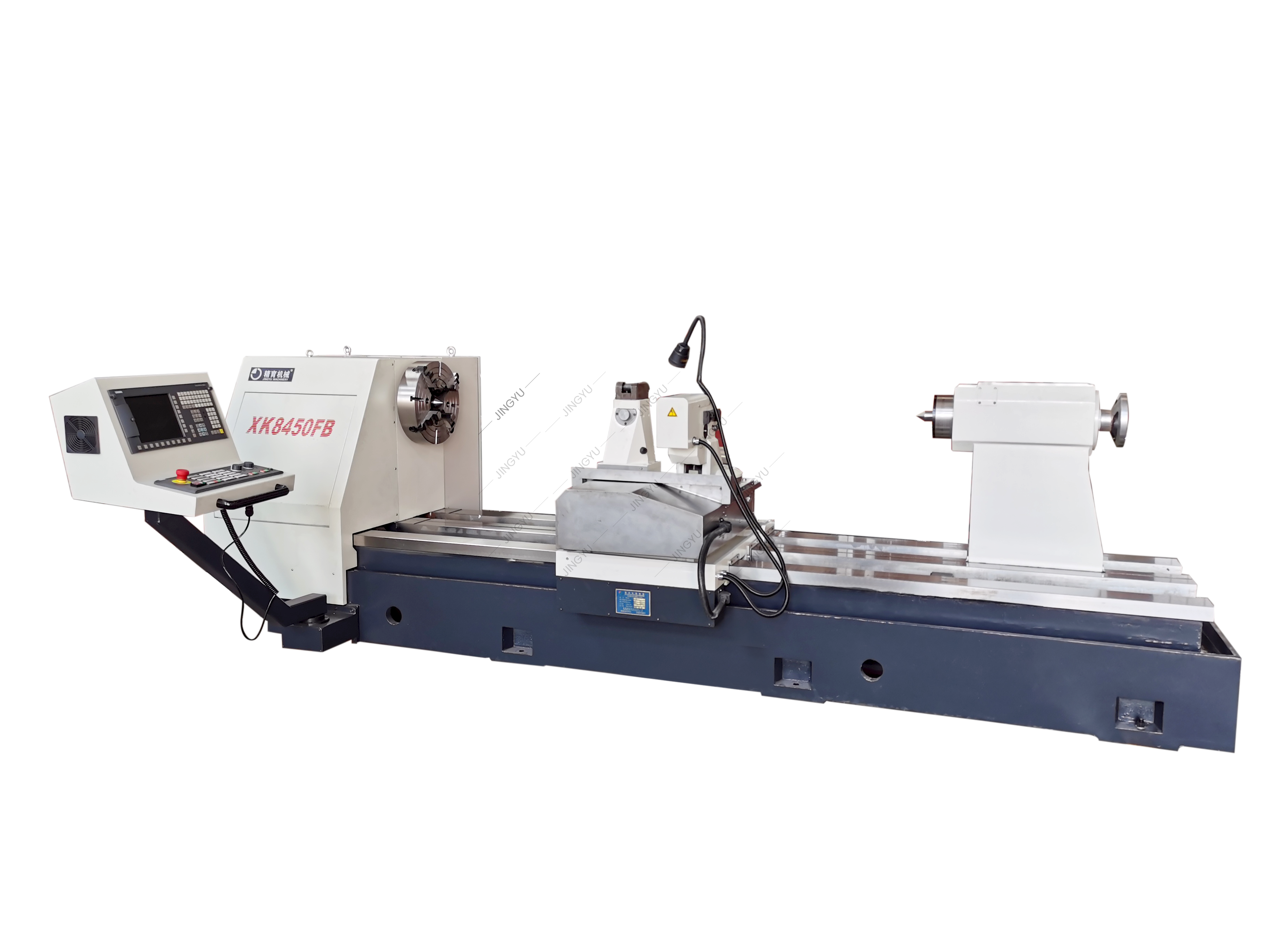Cat:CNC Roll Milling Machine
CNC Roll Ring Milling Machine
We have accumulated rich experience in the processing and use of rebar rolls, and have conducted in-depth analysis and research on the technology of s...
See DetailsThe basic difference between CNC roll milling machine and traditional roll milling machine
The main difference between CNC roll milling machine and traditional roll milling machine lies in the control system and automation level. CNC roll milling machine adopts computer numerical control technology to automatically complete the processing process through pre-programmed programs, while traditional roll milling machine relies on manual operation and mechanical control. The introduction of CNC technology makes the processing process of roll milling machine more accurate and efficient, while reducing the dependence on operator skills.
Difference in processing accuracy
CNC roll milling machine has high processing accuracy. Because the CNC system can strictly follow the program, the error is small, and multi-axis linkage processing can be achieved, ensuring the size and surface quality of the roll are stable and consistent. In contrast, the processing accuracy of traditional roll milling machine is greatly affected by manual operation, the error range is relatively wide, and the multi-axis collaborative processing capability is limited, which makes it difficult to meet the precision processing requirements of complex workpieces.
Automation degree and ease of operation
The automation degree of CNC roll milling machine is high, the processing process is completed automatically, and manual intervention is reduced, which not only improves production efficiency, but also reduces the risk of human operation errors. Its operation interface mostly adopts human-computer interaction system, which is convenient for program setting and parameter adjustment. Traditional roll milling machines require skilled workers to operate manually, which is difficult to operate, inefficient, and has a relatively long production cycle.

Processing efficiency and production capacity
CNC roll milling machines have obvious advantages over traditional equipment in terms of processing efficiency. Automation and multi-axis linkage enable complex workpieces to be processed quickly, reducing the number of clamping times and tool change time, thereby shortening the production cycle. Traditional roll milling machine processing mostly relies on manual control of a single axis or a few axes, and the processing speed is limited, making it difficult to meet the needs of mass production.
Adaptability and flexibility
The program of the CNC roll milling machine can be quickly modified to adapt to the processing of rolls of different models and specifications, and has a wide range of applications. And through software upgrades and parameter adjustments, it can meet different process requirements. Traditional roll milling machines are more suitable for single or repetitive processing tasks, lack flexibility, and require more manual adjustments when adjusting and converting workpieces.
Cost investment and maintenance requirements
CNC roll milling machines are usually higher in procurement costs and maintenance costs than traditional equipment. The high-precision CNC system and complex mechanical structure make the initial investment large, and maintenance requires certain professional knowledge and skills. The traditional roll milling machine has a simple structure and low repair and maintenance costs, which is suitable for enterprises with limited budgets or lack of technical personnel.

Equipment failure rate and reliability
Due to the complex structure and more electronic components, the failure rate of CNC roll milling machines may be relatively high, and regular inspection and maintenance are required to ensure stable operation. The mechanical structure of traditional roll milling machines is simple, the types of failures are concentrated, and maintenance is relatively convenient. The overall reliability is good in a simple processing environment.
Skill requirements for operators
The skill requirements of CNC roll milling machines for operators are concentrated on CNC program writing and parameter setting. Operators need to have certain computer operation and mechanical knowledge. The operation of traditional roll milling machines relies more on experienced technicians, and the inheritance of technology relies on oral transmission and heart-to-heart teaching. It is difficult to standardize and normalize the operation.
Impact on the environment and energy saving
When designing CNC roll milling machines, energy saving and environmental protection are considered more. The use of advanced power systems and cooling systems can effectively reduce energy consumption and reduce waste emissions. Traditional equipment pays little attention to energy efficiency management and environmental protection, has relatively low energy utilization, and may generate more noise and waste.
Differences in applicable scenarios
CNC roll milling machines are suitable for mass production and complex processing of medium and high-end rolls, and can meet occasions with high requirements for precision and surface quality. Traditional roll milling machines are suitable for the production of small batches and simple structure rolls, or still have certain use value in occasions such as maintenance and emergency processing.
Comparison between CNC Roll Milling Machine and Traditional Roll Milling Machine
| Comparison Item | CNC Roll Milling Machine | Traditional Roll Milling Machine |
|---|---|---|
| Control Method | Computer numerical control, high automation level | Manual or mechanical control, low automation level |
| Machining Accuracy | High, small machining error, multi-axis linkage machining | Relatively low, relies on manual operation |
| Operation Convenience | Human-machine interface, easy operation, adjustable parameters | Complex operation, relies on operator’s skills |
| Production Efficiency | Fast machining speed, short tool change and clamping time | Slower machining speed, longer tool change and clamping time |
| Adaptability & Flexibility | Easy program adjustment, suitable for various roll machining | Difficult adjustment, limited application range |
| Equipment Cost | Higher purchase and maintenance cost | Lower purchase and maintenance cost |
| Equipment Reliability | Complex structure, requires regular maintenance | Simple structure, easy to repair |
| Operator Skill Requirements | Requires knowledge of CNC programming and mechanics | Requires rich mechanical operation experience |
| Environmental & Energy Performance | Designed with more consideration for energy saving and environmental protection | Lower energy efficiency, more noise and waste |
| Applicable Scenarios | Complex, high-precision, mass production | Simple structure, small-batch production, emergency repairs |